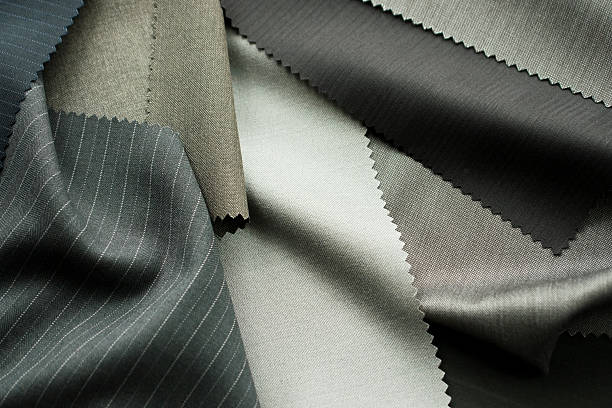
Despite being a widely used fabric, there is still much to learn about spandex. For more information on this enigmatic fabric, keep reading!
Spandex is a synthetic fiber that is as stretchy as rubber. Its elasticity is due to its segmented polyurethane structure.
Is Spandex Transparent?
Spandex is an elastic fabric that’s a popular choice for form-fitting garments. It’s usually woven into other textiles to increase their elasticity, such as polyester, cotton, or wool.
Its main uses include underwear for men and women, as well as girdles and other hosiery. However, it’s also versatile in other garments, such as socks. It’s also very lightweight and easy to dye.
Manufacturers use spandex because it can be stretched repeatedly and return almost exactly to its original shape. It’s also very soft and smooth, and it’s also resistant to abrasion.
Spandex is a synthetic fiber developed during World War II by chemical engineers to find a replacement for rubber. It’s now widely used worldwide to make stretchy fabrics that are both form-fitting and comfortable. It is marketed under several different brands. The black spandex fabric is also sustainable and does not harm the environment when made from recycled materials.
What is Spandex?
Spandex is a popular fabric used in many form-fitting garments. It is a lightweight synthetic fiber that is known for its excellent elasticity.
It is made from polyether-polyurea copolymer fabrics that have been crafted through a variety of processes. It is also commonly referred to as Lycra and elastane.
There are many different kinds of spandex, but they all have a similar chemical structure. They contain long-chain polyglycol combined with a short diisocyanate.
The resulting substance is woven into other fibers, such as cotton, nylon and polyester, to create fabrics commonly used in clothing.
Another widespread use of spandex is as an additional fabric in sportswear. It is a very soft, smooth and durable material that is not prone to wrinkles, lint or pilling.
It is also a very elastic fiber that can be stretched up to 5-8 times its initial length before it springs back to its original state once it has been released. This feature makes it a perfect choice for athletes who want to maintain their shape while promoting comfort and flexibility.
How is Spandex Made?
Spandex is an artificial synthetic fabric often used in form-fitting garments. It is also a popular material for creating bespoke bags.
Melt extrusion, reaction spinning, solution dry spinning, and solution wet spinning are just a few of the processes used to make it. In all these processes, a pre-polymer is produced from monomers and then reacted in various ways to make long spandex fibers.
The most common method of producing spandex is solution dry spinning, accounting for about 90 percent of the world’s production of this fabric. During each process, the pre-polymer is reacted with different elements, such as diamine acid.
In addition, stabilizers such as antioxidants and antimildew additives are typically added to protect the spandex fibers against sources of damage. These include heat, light, chlorine, and atmospheric contaminants.
Spandex is a highly versatile fiber that can create a wide range of garments. It is commonly found in women’s foundation garments, sports bras, athletic wear, and men’s t-shirts and pants.
Is Spandex Sustainable?
Spandex is a synthetic fabric often used in tight, elastic garments such as leggings or shapewear. Its stretchiness and elastic recovery make it a highly sought-after material worldwide. However, it does come with some environmental issues that can be challenging to resolve.
The main problem with spandex is its production, which uses a lot of fossil fuels. It also releases microparticles when washed, which end up in our waterways.
While spandex is not the only synthetic fiber that causes these problems, it is one of the most popular and widespread, so it is essential to be aware of its impact on the environment.
In addition, the chemicals that are used to produce spandex are not biodegradable or compostable, and its fibers can’t be recycled. The end result is that a large percentage of clothes and clothing fibers that contain spandex end up in landfills or in designated trash disposal areas.
If you have a pair of old spandex pants or leggings at home, try donating them to a charity shop or an in-person take-back program. These are great ways to recycle and reduce the amount of non-biodegradable textile waste in landfills, rivers, and oceans.
What is the Recovery Rate of Spandex?
Spandex is a long-chain synthetic polymer fiber with excellent elasticity. It can be stretched up to five to eight times its standard size and then recovered to its original shape. This characteristic has made it an essential fiber for making stretchable clothing.
To make spandex, two types of pre-polymers are reacted to form the backbone of the fiber: a flexible macro glycol and a stiff diisocyanate. These two primary components of the thread contribute to its remarkable elasticity.
The resultant fabric is then woven using a core-spun weft yarn with a higher spandex denier than the other core-spun yarn. This increases the spandex percentage in the material, increasing the elongation potential and recovery.
Another factor affecting spandex fiber’s recovery is how it is treated after manufacturing. During wet processing and finishing, the spandex fibers tend to relax. This relaxation releases temporary tension in the yarns, which allows more space for the thread to stretch. This release of tension results in a vast decrease in weft shrinkage.

